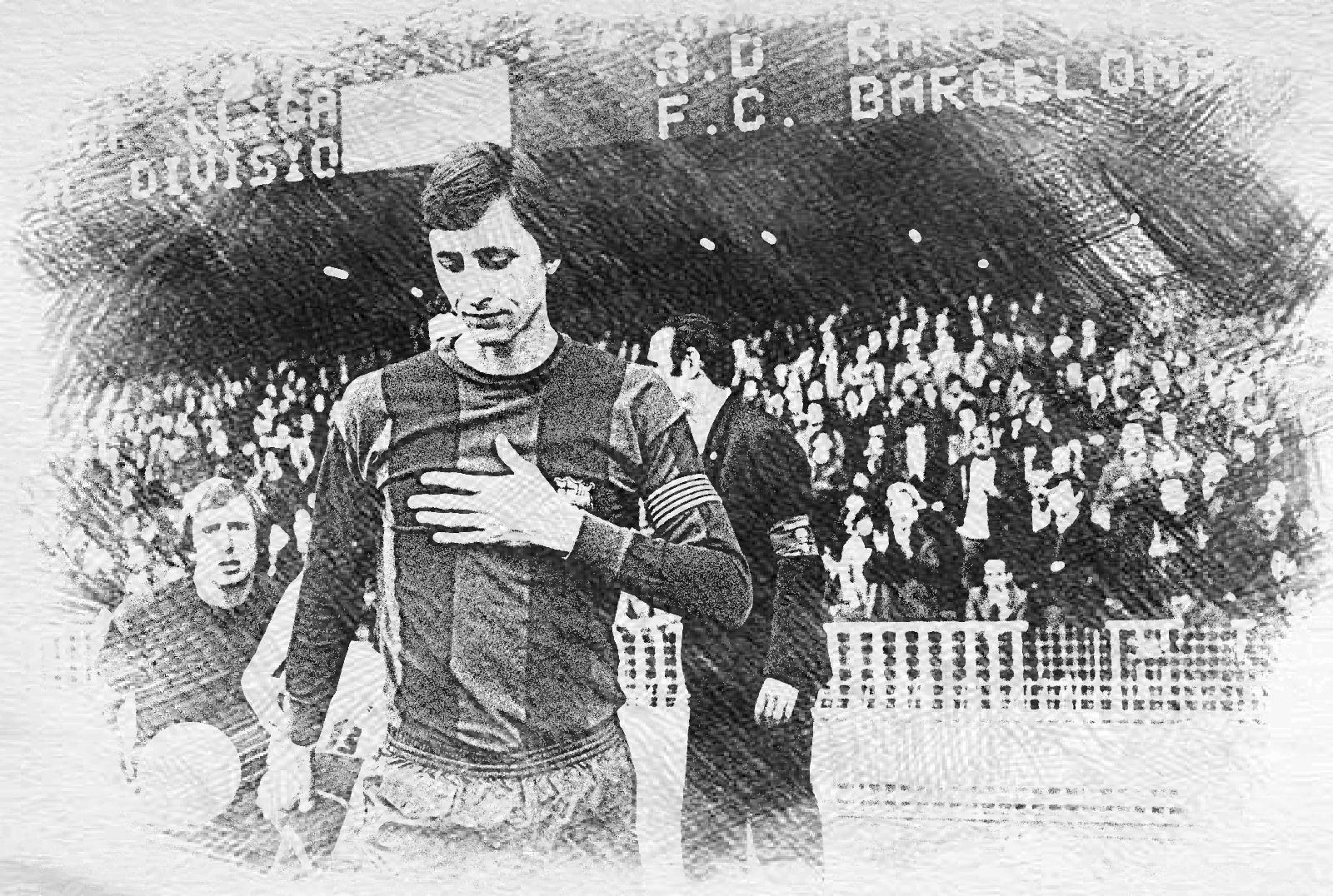
Football Manager Primer: Playing on The Edge with Wide Centreback
Part 2. Using Cruyff’s 3-4-3 Diamond to Highlight New Wide-CB Role
Now that we established that Football Manager is a simple game, let me show you an example of how simple it is to recreate a seemingly complicated historic tactic. We will do it step by step. So it might take a few articles to lay out the tactic completely. In this first step we’ll only take a general look at the newest FM role that inspired my FM22. Specifically the Holy Grail of all FM tactics, Total Football. And in FM22, recreating Total Football became easier than ever before. That is because of the introduction of the newest role, Wide Centre-back. As an aficionado of Johan Cruyff’s famous 3-4-3 Diamond, the Wide CB has become my new all-time favourite Football Manager role.
The rest of this guide series will almost exclusively focus on Johan Cruyff’s magnus opus of a tactic. The one he most famously employed during his time managing Barcelona in 1980s-1990s. The 3-4-3 Diamond. I’ll also use this tactic to highlight the new and exciting changes to how individual mentality is handled in FM22. And the effect this has on faithfully recreating Total Football. But more on that in Part 3 – Mentality Ladder (coming early in November).
The Team Of Dreams
The above formation allowed Cruyff’s “Dream Team” to win trophies and capture our hearts with its artistry. It was a formation that was never seen before, although it was innovative modification of the classic Total Football formula. Moving away from the typically Dutch 4-3-3, Cruyff flipped the tables on possession-focused attacking football. He did this by showing that two traditional centre-backs were not necessary when Total Football was the goal. In other words, you can afford to play on the edge if your aim is superior possession and attacking intent. But for this to work you need to be able to dominate your opponent through technical superiority on the pitch.
According to Johan Cruyff, it’s more important to maintain superiority in the midfield rather than defend against a potential attack. Attack is the best form of defence. Nearly total control over the game becomes the ultimate goal of Total Football. Thus it’s rather redundant to prepare against an attack that won’t come. Not when you are the superior team and your objective is to maintain control in opponent’s half. Or to win the ball back as quickly as possible so as to continue your hold over the match. So before you read any more, the following tactic is not made for the underdog. And definitely not for the relegation-threatened team. It was actually designed for a small but mean pit-bull competing with the big dogs in Champions League. With a club like Ajax, Club Brugge or even Spartak Moscow, the 3-4-3 Diamond could really shine.
Wide Centreback – Made for Total Football
In Total Football, control of the ball is key and it starts in the back. And the new Wide Centre-Back role can help us achieve exactly this in FM22.
To achieve “Total” control, Cruyff moved one of his centre-backs into the midfield. Then he asked the two fullbacks to play a hybrid role between central defender, wingback and defensive midfielder. Thus making up the 3-4-3 Diamond’s most interesting aspect, its three-in-the-back. Or more precisely its lack of traditional defence that stays backs and defends. In previous versions of FM I represented this by using a single CB flanked by two IWB(D)s or FB(D)s. But now with the advent of the new Wide Centre-Back role, recreating Cruyff’s 3-4-3 is easier than ever. And more faithful to the spirit if Total Football than ever before.
According to the in-game description, Wide Centre-Back’s main job is to stop the opposing attackers and to clear the ball. This seems pretty much in line with the role a traditional Centre-Back. But unlike standard central defenders, the Wide Centre-Back is encouraged to stay wide in possession. In addition to defending, his other role is to support the midfield like a full-back would. And if you feel adventurous, you could set him on attack duty to really maximize dribbling forward and providing late goal threat!
Lasting Legacy of Johan Cruyff
If you have possession, you don’t need to defend. After all, there is only one ball.
Johan Cruyff
Johan Cruyff singlehandedly introduced a new way of playing football. And in the process revolutionized Spanish football.
Upon becoming manager, first thing Cruyff did was remodel Barca’s tactical philosophy to play Dutch Total Football. Or his version of it. And he did this by changing Barcelona’s tactical and recruitment strategy. Club culture if you will. Barcelona became a Total Football factory on and off the pitch. With the exception of Holland’s Ajax (where Cruyff learned about Total Football) there was no other club like it. And arguably still isn’t.
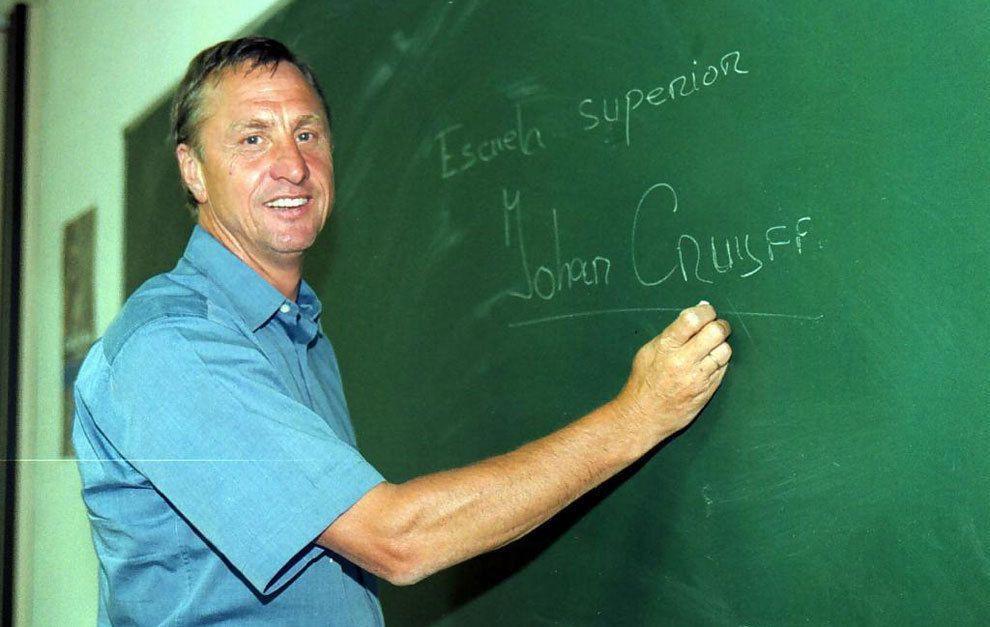
Of course reform at Barca’s youth academy played a huge part in this. With the new focus on creating Total Footballers, the way Barcelona youth teams trained and how scouts looked for talent had to change. The technical attributes, overlooked before in favour of height and physicality, became the focus of attention under the new system. A whole generation of “diminutive” Spanish footballers, like Xavi and Iniesta, have Cruyff to thank in part for their success. Even Leo Messi’s meteoric rise is partly thanks to Cruyff, if not directly. But this is not an article about that. Barca’s famed La Masia probably deserves a whole book of its own. Here I will talk about tactics. And specifically Cruyff’s 3-4-3 that revolutionized not only Spanish football but possession-focused football as a whole. With its influence still felt in the work of modern managers like Marcelo Bielsa and Pep Guardiola.
Johan Cruyff’s Dream Team formation, officially labeled 3-4-3 Diamond was not that different from the 4-3-3 in which Cruyff played during the majority of his footballing career. Barca’s Total Football legacy was in how Cruyff remodeled one of the CB positions into a hybrid free role in defensive midfield. A role, filled by young Pep Guardiola, and tasked with both the midfield and defence duties, depending on the situation. We can view it as some kind of mix between a half-back and a creative regista. Not so far removed from how Guardiola utilized Fernandinho more recently at Man City.
At the top of the Diamond, Cruyff placed his other patented hybrid role, that of the False 9. In Cruyff’s Dream Team, Michael Laudrup personified this role. Similarly to Guardiola’s role, it was the Dane’s job to transition between two strata. In Laurdrup’s case, attack and midfield.

Cruyff was very familiar with False 9 since he made the role his own while playing at Ajax. The hard working, supporting quasi-striker role became as synonymous with Total Football as Ajax’ patented 4-3-3 formation. While playing as a False 9, Cruyff was a force of nature, and a quintessential Total Footballer. He dropped deep and drifted into midfield where he would help out his teammates with build-up rather than staying near the penalty box like a typical striker. In truth Ajax’s 4-3-3 did not have a central striker. During possession, Cruyff became an extra midfielder who through hard work and boundless creativity made the whole team better. Dutch 4-3-3 was the first truly striker-less tactic.
To me the photo above was always worth a thousand words. The look of resignation on the face of the prostrate player is only surpassed by the elegant grace with which Cruyff glides past the Argentinian keeper. Frozen in time, Cruyff will forever be the razor sharp bird of prey with his eye on the kill. Operating on a wholly different level that opposition could not match. A personification of Totaalvoetbal. But it wasn’t just about #14’s supreme skill with the ball. Johan was often the hardest working player for both Ajax and Dutch side. Cruyff may have worn the iconic #14 but we’ll always remember him as a False 9. It was his innovative use of space that paved the way for Messi and the reemergence of the modern #9.

These two fluid roles were most obvious reminders that Cruyff the Manager was indeed developing a Total Football system at Barcelona. The interchanging of positions and role swapping were ever-present in Barca’s 3-4-3. And just like in Ajax’s fluid 4-3-3 where attackers sometimes played as defenders and defenders as attackers, the hybrid roles of #9 and #4 were central to the functioning of the tactic. Thanks to Laudrup’s and Pep’s fluid movement and masterful manipulation of space, multiple passing triangles could be created in the midfield. And that is the key to the success of Cruyff’s 3-4-3. In removing one man from defence, he created an actual four men diamond in the midfield. Cruyff understood that in football nothing was better for controlling the pitch than having a midfield diamond. Even defence becomes secondary to an effective diamond.
Total Football – Playing On The Edge
If you have four men defending two strikers, you only have six against eight in the middle of the field. There’s no way you can win that battle. We had to put a defender further forward.
Johan Cruyff
I am a staunch believer in the power of 4-3-3. My fascination with the shape goes back to FM14. And I will always say that it’s the most defensively-solid of all possession-centered formations. However because of its shape it can get rather predictable at times. This is especially evident when it comes up against bottom-heavy parked buses (so common in recent FMs). It does not do very well against such ultra-defensive formations. Unfortunately 4-3-3 is also rather bottom heavy. Do you really need four players staying back when your opponent has no intention of attacking?
With 4-3-3, when facing a parked bus, the ball tends to get stuck in the midfield where your players will pass the ball around endlessly with few attacking avenues open to them. Or even worse, the opponent marks or presses your midfielders leaving very few passing options for your centrebacks. You want them to play from the back but instead they resort to booting the ball long to your attackers. The end result is usually “pointless possession” – more possession than you really need.
Wait? What?! I thought you just said possession was essential. Why is too much possession suddenly a bad thing? Well, it is if it’s not the right kind of possession. Possession with intent.
If your two centrebacks and keeper just pass between each other for 90 minutes, you might be very good at preventing the opposition from scoring but you also won’t be scoring much yourself. The ball will move where the majority of your players are. And this why it is more important to pack your midfield as much as possible. Especially with competent ball-carriers and runners. Essentially players from whom it will be difficult to take away the ball. This will allow the creation of possession with intent as the ball moves through midfield to your three forwards. It will also free up the forward from his midfield duties with dedicated attacking midfielder behind him.
Cruyff saw the inherent problem with the original 4-3-3, which he was very familiar with from his Ajax playing days. And then decided to make a change that would revolutionize Barcelona and football forever. It was rather simple. He made an important shift by moving one centreback higher into DM position and one central midfielder into AMC position. Resulting three in the back, allowed the rest of the team to concentrate on winning the midfield battle and controlling the ball in the opponent’s half.
F9(S)
W(S) AM(S) W(S)
CAR(S) HB(D) CAR(S)
WCD(S) BPD(C) WCD(S)
SK(D)
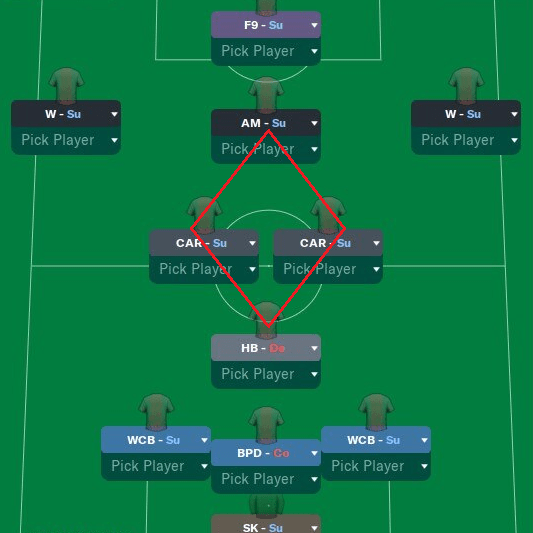
I was criticized for playing three at the back, but that’s the most idiotic thing I’ve ever heard. What we needed was to fill the middle of the pitch with players where we needed it most. I much prefer to win 5-4 than 1-0.
Johan Cruyff
Amazingly, traditional defending didn’t enter Cruyff’s mind. Barca’s keeper Andoni Zubizarreta even recalls asking the Dutchman about how he wanted his team to defend. “How should I know?” was Cruyff’s famously laconic answer. “You decide. You’re more interested in how to defend a corner than me.”
To understand Cruyff’s tactical thinking it’s worthwhile to watch the following video. It is a must-watch viewing for anyone trying to emulate his 3-4-3 Diamond in FM22.
To play Johan Cruyff’s 3-4-3 successfully, it is not just the matter of tactics and choosing the right roles. Far from it. You’ll have to start with long-term plan to adapt your club culture both on the academy training field and the transfer market. In order to fit into the Total Football system, every footballer needs to show excellence in three key fields.
- Technical Excellence because that is important in maintaining control over the ball. I prefer not to call it possession and get hung up on the numbers. The simple idea is you need players who can keep the ball away from opponents or can steal it away easily.
- Physical Strength to maintain high level of intensity through the whole match. Total Football is not golf. Every outfield play has to run for the whole 90 minutes.
- Endurance and speed are needed for the other essential aspect of Total Football: Mental Resilience. By combining physically fit and hard-working players, you get footballers who are capable of achieving the main objectives of Total Football. High Hard Press and Possession with Intent.
Total Football is not a slow possession game of attrition. It’s a hard pressing, fluid, attacking machine. As seen in the clip above, Dutch total footballers maintained a constant pressure on their opponent. They were always looking to win the ball and maintain the vertical flow of attack. The play that starts at about 20 second mark is my favourite and very representative of this.
Note of Caution
Lets get his out of the way first. When I said that Cruyff was a staunch proponent of “playing on the edge,” I wasn’t kidding. The Total Football style is not for the faint of heart. Especially if your heart stops when you spot opposition strikers behind your defensive line. You will definitely need very good Sweeper-Keeper, BPD-type centreback and two defensively-solid wide centrebacks.
It is not, by any means, a plug and play tactic. Although from early testing it’s apparent that the tactic has the potential for some very good results. Especially if you combine it my Total Football training method. You have to really go all out when developing a Total Football system. No half-measures. Implementing the formation alone will not be enough. You have to make sure that you have suitable players and coaches. Thus changing both your recruitment and youth development strategy to fit the tactic is absolutely essential. And then you’ll need to train players to develop the right attributes to fit the system (topic for future articles).
I need to emphasize that it is not a plug-and-play tactic, eventhough it appears to work well with a variety of teams. So far I tested it with Porto and (surprise!) Ajax. Both of which are not world-class but still possess very technically-gifted squads. Even at the start of the game, these teams have the players that are well-suited to Total Football. Players with great technical and mental attributes.
What this tactic does best is to accentuate midfield control to the point where most of your defending is done through ball possession and pressing the opponents in their own half. As Cruyff idealized, when you possess midfield advantage and control the ball then there is no need for traditional defending. As such this tactic thrives on a very aggressive defending style. But if you do not have “Total Footballers” required for it, then it could turn into a disaster. It is similar to asking a squad with low levels of Aggression, Stamina and Workrate to gegenpress. It just won’t work. Before you can attempt to play Total Football with a club of your choice, you need to make sure that you possess players who are Total Footballers or have the potential to develop into such.
Back Three – The Spine of The Tactic
First of all, look at this attributes profile and guess whether it’s a striker, midfielder or defender in my system.
The right answer is all three. And he will probably be a very good Wide Centreback. You might ask, Crusadertsar why do you need your defenders to be so technical? Don’t you already have enough creative passers in the midfield? Well, not really. While your most creative players will probably gravitate towards the four roles in your midfield diamond, the back three is equally important. If anything, this trio of defenders make up the creative spine of the formation. Most of your attacking plays will start there. So that is why you need make sure that besides being competent defenders they know how to control and pass the ball forward.
The very fluid nature of the tactic, ensures that my back three fan out when in possession, covering the width of the field. I also have team instructions that contribute to wider defensive positioning.
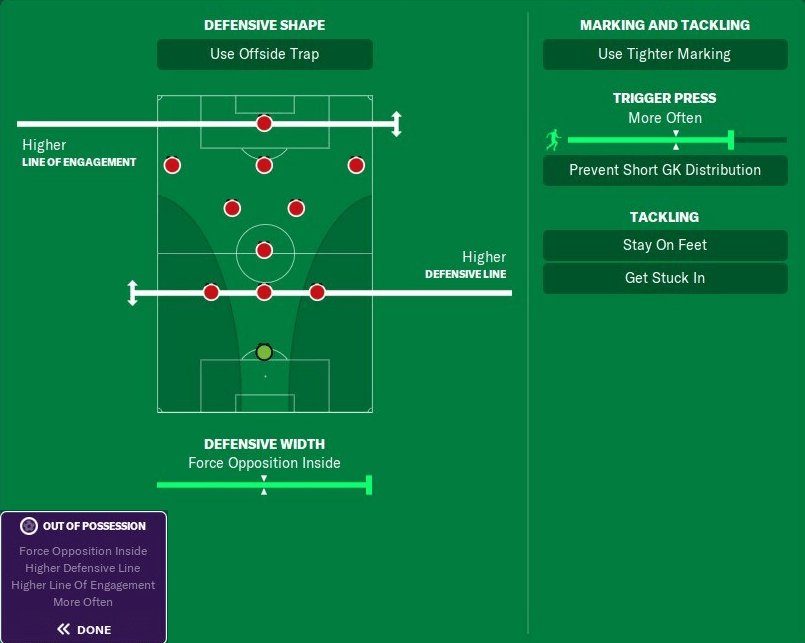
But in FM22 the biggest game changer is definitely being able to play the two outside defenders as wide-centrebacks (with the hard-coded instructions to stay wide and make overlapping runs forward).
This way my three centrebacks can have as many as 3-5 short passing options at all times. During transition phase this is huge! It gets even better when the opposition team tries to press my defenders. When they do this, they will create gaping holes in their own midfield which my midfielders and attackers are more than happy to exploit. As you can see in the example above my wide centreback Mateus Uribe has the ball. He is a very competent passer (he is a retrained midfielder) and already has 3 safe (blue) passing options to #8, #6 or #3. And two riskier (red) options. And given the nature of the diamond, the 5 potential ball receivers themselves have at least 3 other passing options forward. Which is already a good start to the play.
But were the opposition midfielders to press Uribe, then they would be opening up space in the midfield, revealing other, better passing avenues for my wide centreback. Such as to my AMC (#10) and winger (#2). My AMC is a very hard working player who is always looking for the ball and often drops deep or shifts to the wing with the ball. A recipe for an easy overload. And once my winger or AMC have the ball they can dribble with it to get into more dangerous space behind the opposition midfield. All while the opposition midfielders are caught on their backfoot dealing with our adventurous wide centre-backs.
Of course in order for this to work, Mateus needs to possess special qualities as a wide centreback. Besides being able to pass, he must also withstand pressure from opponents trying to steal the ball from him. This is one of the reasons why I prefer to play tall (Jumping Reach) midfielders with decent strength, tackling and marking as my wide-centrebacks.
As a natural defensive midfielder Uribe already possess those qualities as well as being better at passing and ball control. The key attributes here are his Composure, Decisions and Balance. They will help him to maintain possession despite intense pressure from opposing players. So he can receive the ball, attract the attention of opposing midfielders or attackers, withstand their challenges and then coolly pass it to his midfield teammates. While they are not elite-level, his Dribbling and Agility are decent enough. It’s always a bonus to have those two attributes as high as possible when it comes to controlling the ball.
In Total Football an ideal player for any role is one who could fill any position in the formation, from striker to the centreback. While Porto’s squad is not by any means full of Total Footballers, there are some very good well-rounded players. Especially the all-important back three. Intentionally I hand-picked my three defenders to resemble midfielders more than traditional centrebacks or fullbacks. In order to achieve this I have no problem with playing players out of position. Retrained tall midfielders make for best wide-centrebacks. Not being natural in the position has very little penalty on performance.
What’s most important is whether the player has the attributes to perform in the role. At Porto, two of my wide-centrebacks, Grujić and Uribe, are former midfielders and have very little experience as centrebacks. No matter. I chose them for their good positioning, marking and tackling as well their technical prowess to maintain control of the ball. This is where our defending through possession begins. It’s all in the attributes.
Part of the reason why the tactic works so well is having players like Uribe as my wide centrebacks. As you can see he could just as easily slot in as one of the midfielders. And his contribution in team’s possession numbers has been immense. Only a short time after switching to the tactic, Porto has already topped the league in the number and accuracy of passes.
And it’s no small thanks to my wide centre-backs’ contribution in passing from the back. Take into account that this is still a small match sample of 5 games in the beginning of our season.
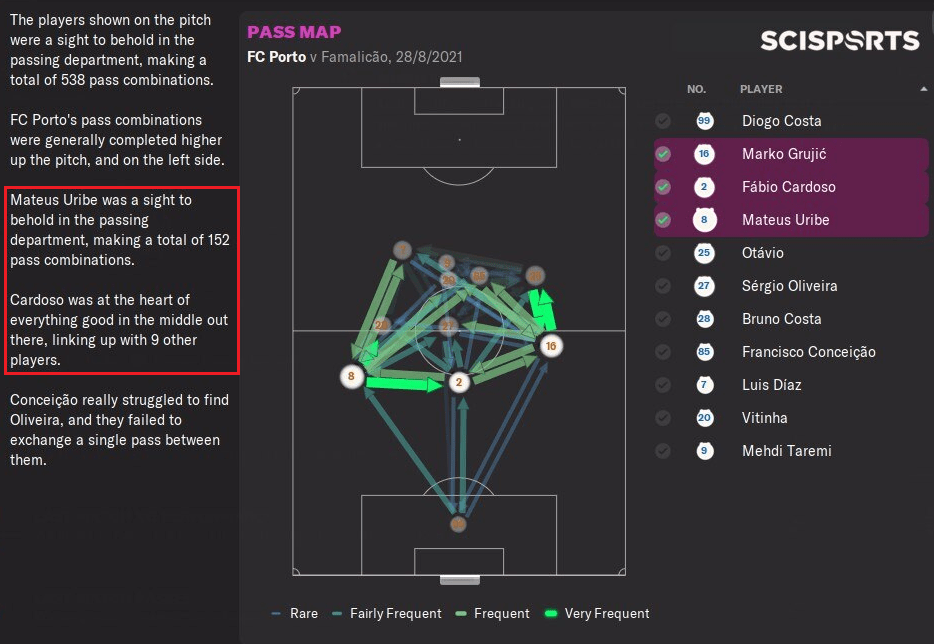
Similarly at Ajax, we have a wealth of talent that can easily straddle the line between midfield and defence. I believe that retraining midfielders to play as defenders is the best way of recreating the roles of Koeman, Ferrer and Sergi from Cruyff’s Dream Team.
While Sergi and Ferrer were acting as wide defenders, the sole central defender Koeman was more akin to an Italian libero/sweeper. Just like Koeman, Lisandro Martinez is comfortable dribbling and bringing the ball up towards the midfield. Once there, his superior technical and mental attributes are more useful in aiding the possession battle than if he was a traditional centreback.
Diamonds Are Forever
So to summarize, the unique quality of Cruyff’s 3-4-3 “active defending” is the two diamonds linking defence to midfield.
To create his double diamond, Cruyff told one central defender to sit deeper sweeping up any loose balls and bring the ball forward when in possession. Basically, it’s your libero-style defender. Then continuing to recreate Cruyff’s system, you place two wide defender/fullback hybrids on both sides of the central defender. Ideally, retrained midfielders excelling in both defending and passing. They also require good mobility to be able to get back into their defensive positions when out of possession. They will need to have jumping reach and other centreback qualities to deal with crosses and intercept opposition attackers. But otherwise playing defensively responsible midfielders with good crossing and dribbling (for when they overlap) is the way to go.
The main advantage of having two diamonds is the multitude of short passing options created. Especially if you have good passers in both your AMC and Defensive Midfielder pivot roles. Cruyff’s priority again was to defend through possession and in turn maintain ball control by always having players to pass to. Therefore the role of the Defensive Midfielder (Dream Team’s Pep Guardiola) becomes key. Because he sits in the hole between the midfield and defence. When the wide-centrebacks and/or central centreback carry the ball forward into the midfield, the DM must drop back to cover for this movement. Half-back might be just the role to mimic this kind of behaviour in the game. But you have to make sure that he has sufficient creativity to excell in the role like Pep did.
In DM position, you’ll need a player similar to your libero. He must be very technical and comfortable on the ball in order to act as your defensive pivot most of the time and a second centreback some of the time. It helps immensely if he has good jumping and other defensive attributes.
Concluding Thoughts
I’ve been thinking long and hard on how to start my tactical journey in FM22. In my time with last year’s FM version, I’ve written about many different formations. Everything from 4-3-3 to 4-4-2 and 4-1-2-1-2. Overtime my interests shifted away from the obsession with Total Football to a deeper appreciation of the pragmatic dark arts of Zona Mista. And then there was the long-overdue love letter to Jose Mourinho. With such wide focus to management last year, it can be hard to choose one specific tactical direction to take with FM22. I guess it is the perfect example of the great versatility of the game which allows such freedom. Many approaches are viable in FM. And with careful planning almost any tactic can be successful. So the real question becomes, what style of football are you most passionate about?
With the reveal of the wide-centreback, the choice has become quite easy in FM22. I chose to play on the edge. Why defend when you already have the ball? Once a Total Football addict, always a Total Football addict.
The overall team mentality is another choice that has become very easy while developing my tactic. But that’s the topic of my next article, titled “Mentality Ladder”. It will take a deeper, under the hood look at my Total Football tactic. And at the same time, it will examine some very interesting changes to how players individual mentality is handled in FM22. It is really changing the way I set up my tactics. But more on that later. Thanks for reading this far!
And if you enjoyed this article, then please follow us @ Dictate The Game’s Facebook and Dictate The Game’s Twitter.
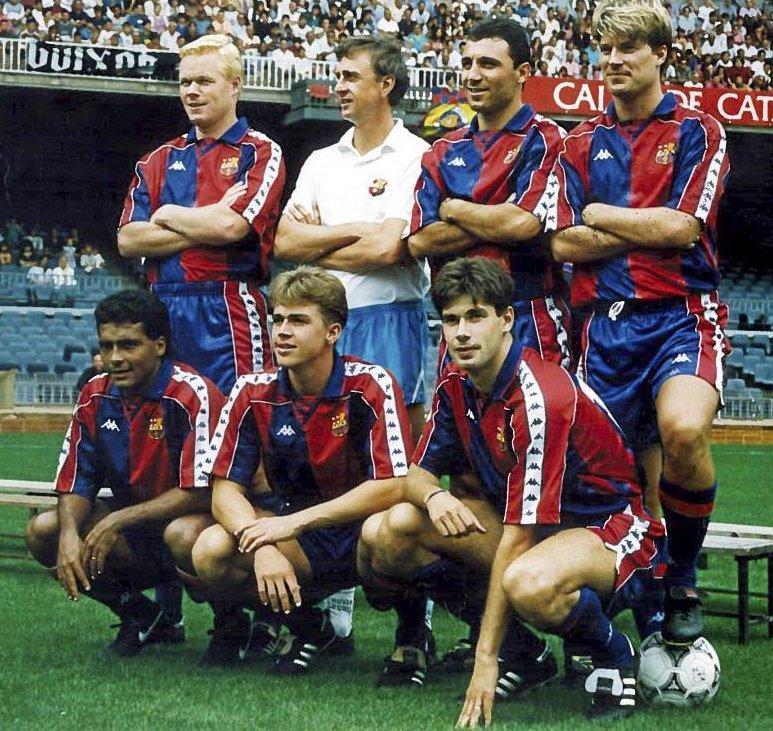

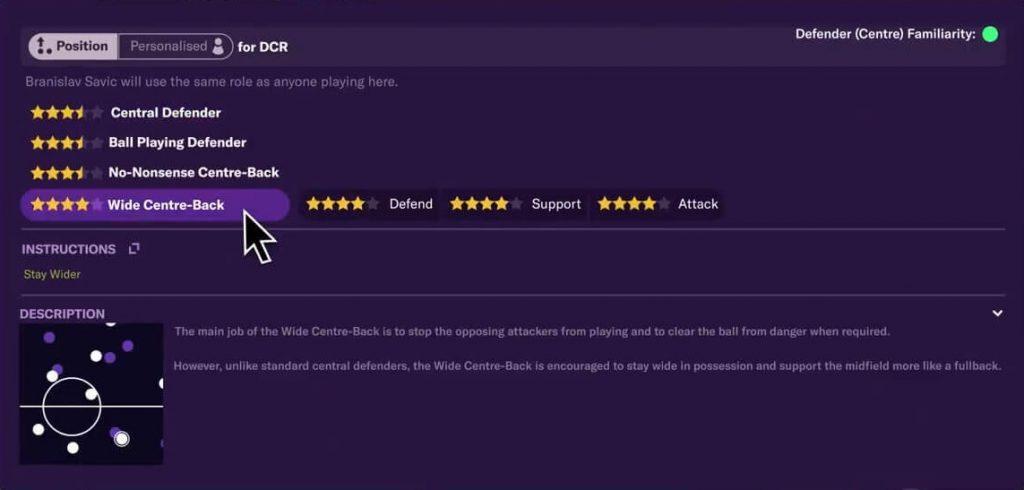
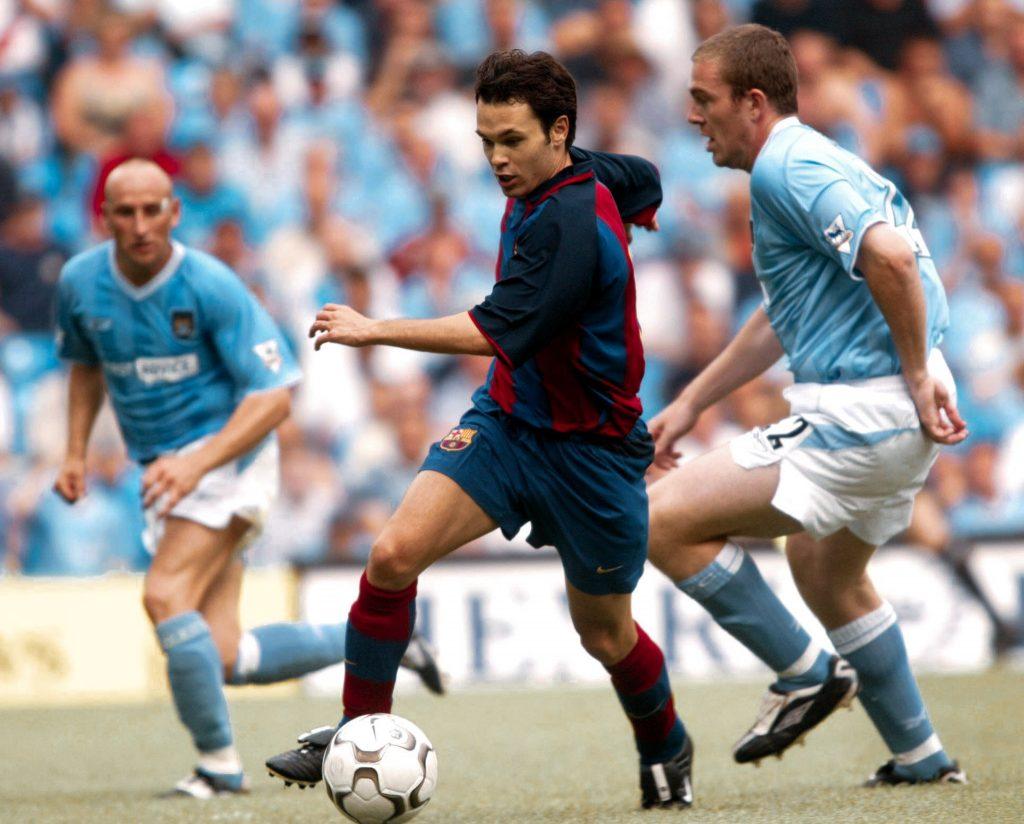
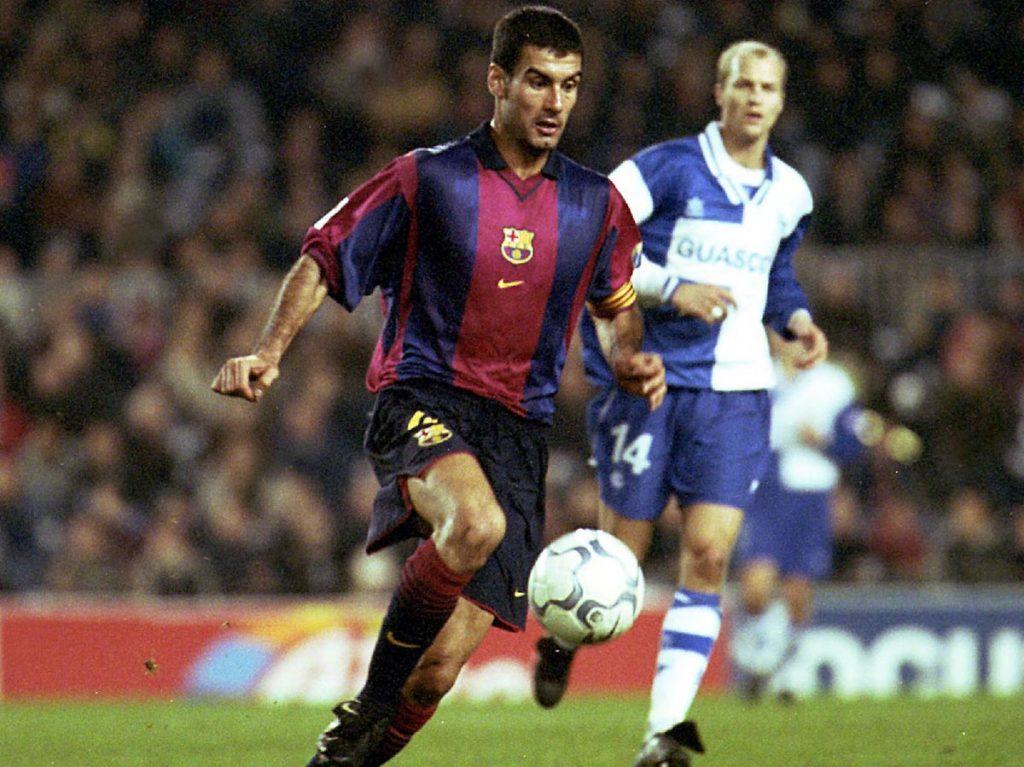
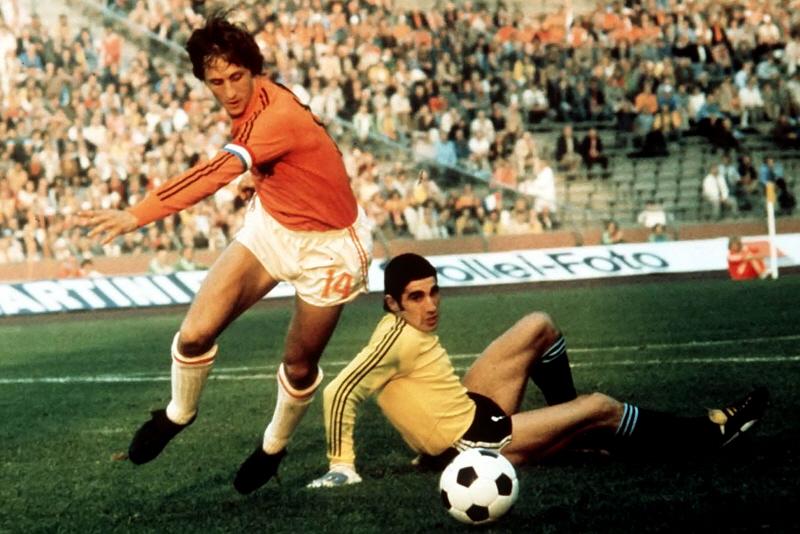
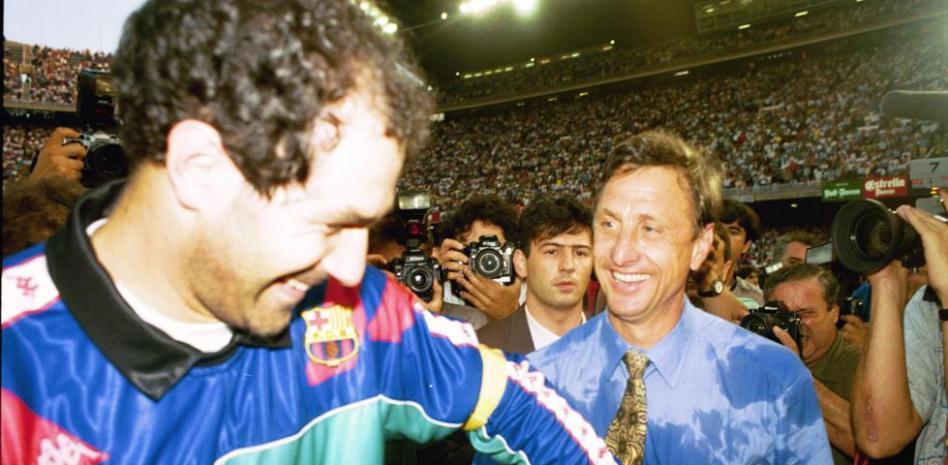
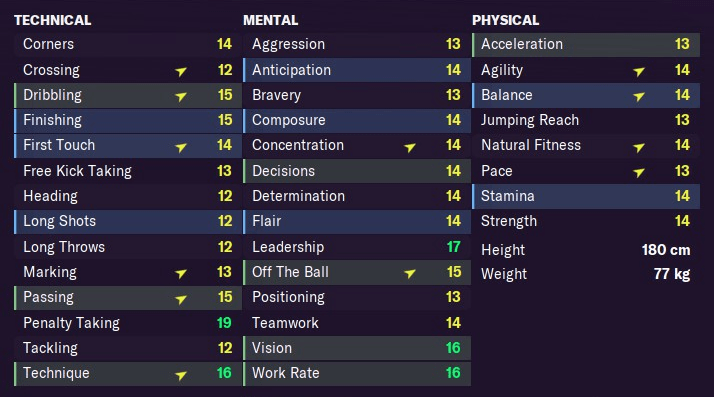
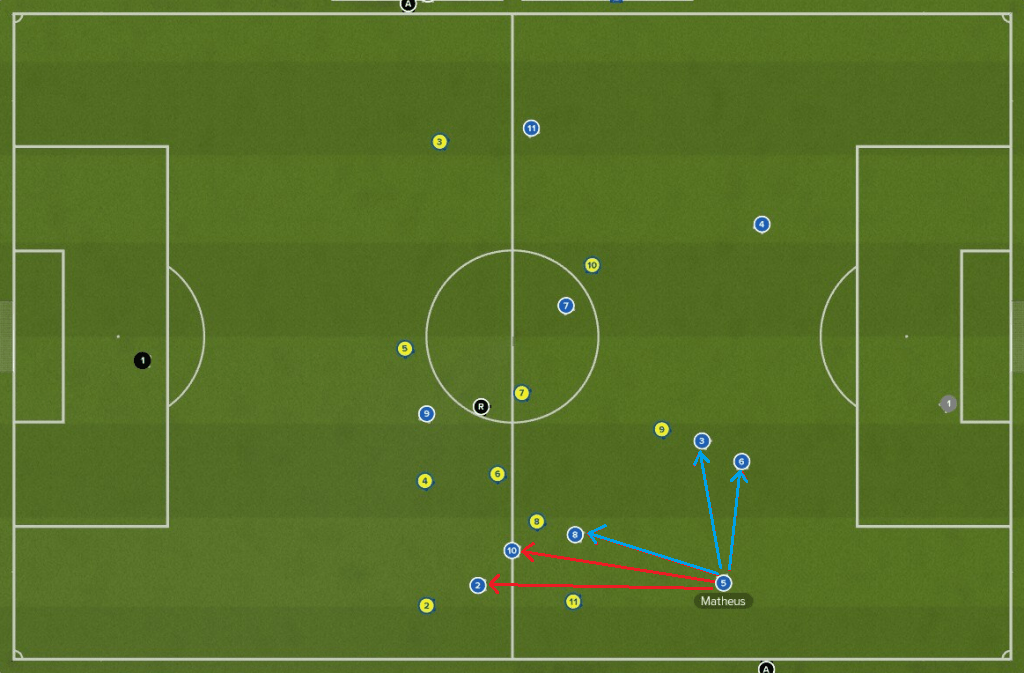
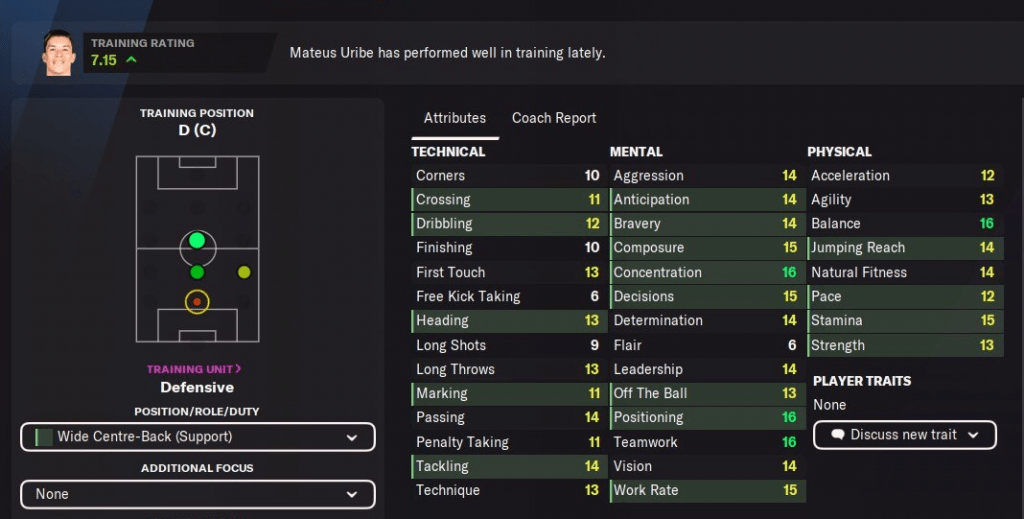
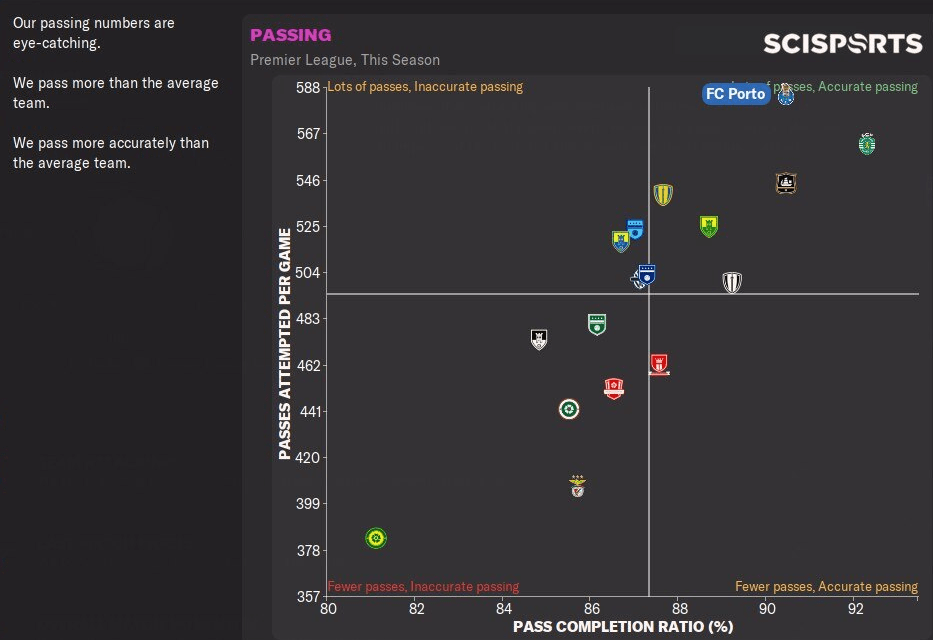
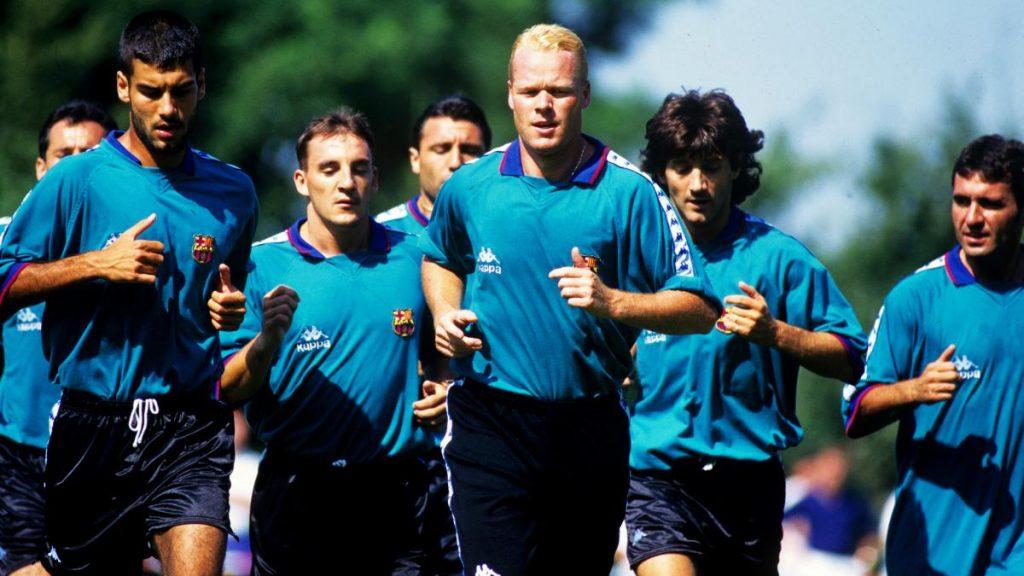

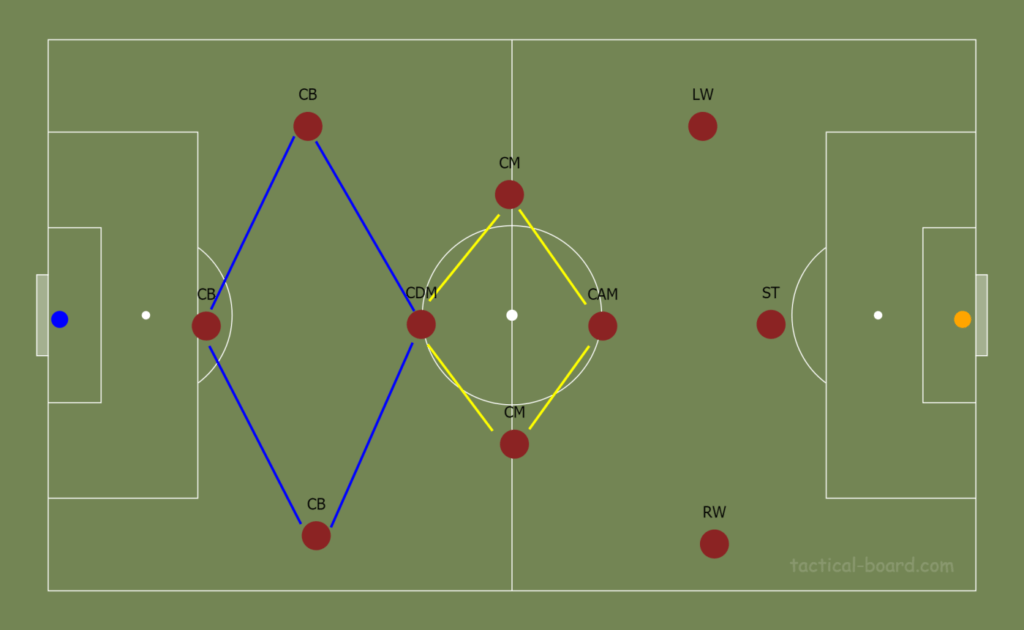
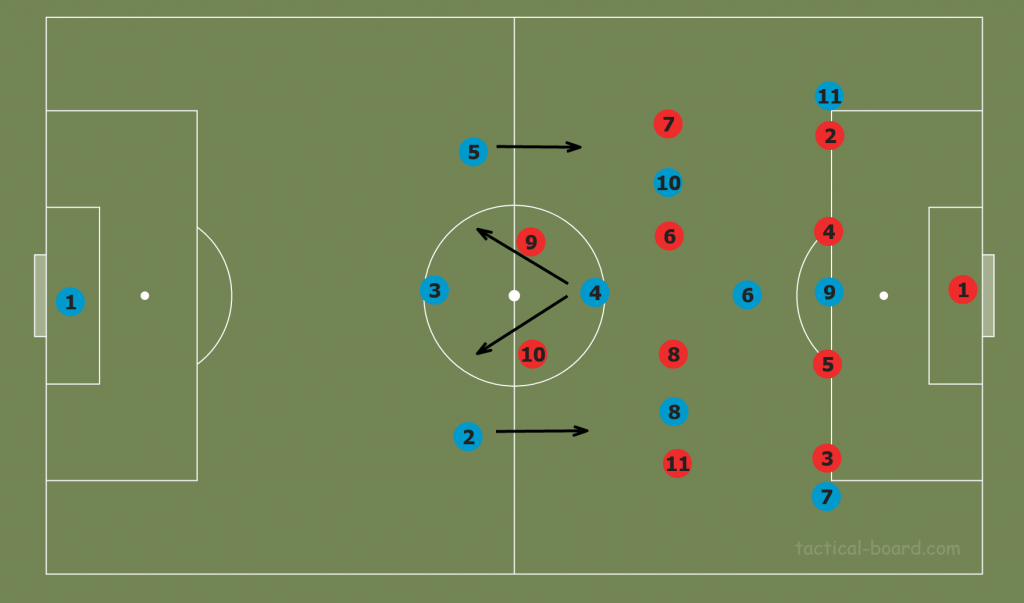

16 thoughts on “Football Manager Primer: Playing on The Edge with Wide Centreback”
I’m trying to make this formation on my own, based on Ajax 1995 formation. I also thought in 2 Carrileros at the middle, but didnt test enough. What’s your team instructions? I think we will need to make something based in Gengepress, control possesion and Tiki Taka. But as I said, I did not think enough yet. Can you show me your team instructions and Ajax results?
Thanks.
I’m still finalizing my instructions so will get those soon in time for the full release. Regarding results with Ajax, I did the pre-season but will need to test it with competitive matches to draw more conclusions.
you’ve teased us with the ‘Out of Possession’ instructions. Are you going to share the rest of the team and player instructions in the next part?
Yes! I will explain the whole tactic in the next article. Right now there are too many changes in the in possession and transition instructions. They should be ironed out as I do more testing.
Love this article. Thank you for sharing.
As a Dutchman from Amsterdam I am biased, but to me Cruyff just is football. Some can argue there have been better players or managers, but there is nobody who understood the game better than Johan did.
I always struggled to recreate his Barca team in FM. But your formation and roles are more close than I have ever been. Started with the formation at Telstar. They are the bottom 5 in the Dutch 2nd division. As you said you’d need pretty good quality players to make it work, but the first three games with this side the tactic created some beautiful play. With the low quality players I have, I have instructed not passing into space and one click shorter and lower tempo. That’s just to get my possession at about 60%. I am surprised how well my WCB handled the passing, although their technical skills are not as they should be. Thanks to the triangular shape of the formation they never got under too much pressure yet.
Also it’s not that I have added 10 wonderkids to my squad. It’s end of december and I use all this season’s Telstar players and have only loaned Xavi Simons. I have worked hard on my team chemistry and tactic familiarity, so that is really important as well.
I have found that my wingers only got about 9% of their crosses to connect, so I am thinking of lowering their attempts after the winterbreak. Further my goalkeeper hoofed a lot of long balls so I think I have to put him on Sw D in stead of support. Just to keep possession better.
I have made three other adjustments in individual instructions. I have instructed my AM to move into channels and one of the CAR and the HB to take more risk in passes. They have decent passing skills (12 pas and 12 vision), so it just suits the players.
The only defense problem I have had is that a lot of opposition far post crosses resulting in chances, because that player was normally marked by a FB or WB. Haven’t studied it enough to pinpoint the causes.
I really enjoy getting Cruyff’s thinking into football, the man has been such an inspiration to me all my life. I have had the honor to meet him IRL twice. They say never meet your idols, but I can tell you that Johan is the example to the rule.
Looking forward to the next article and tinkering.
Amazingly detailed response my friend! Thank you for sharing your story and feedback. Its exactly what I want to hear when I do my writing. Seeing how it affects others. I’m in awe that you actually got to meet the Man himself. Wow. Lucky!
So again thanks for the wonderful response. Lets continue tinkering together!
You are more than welcome.
I have been tinkering some more. Defense has been ok. The concept of having possession to prevent the opponent to score works. The pressing results in a lot of long clearances by the opponent and the covering BPD has had our best rating. The most chances we give away are still crosses to wingers. The often get a free header. Man marking them hasn’t helped much. The three CB seem to get lost in marking.
Offensive I found it hard to create. I have often a better xG than my opponent, but it’s hard to get runs in behind. The CAR are great for build up, but they don’t give much of a threat. Changing the F9 to an AF helped a bit.
Let’s say we changed Laudrup to Romario, haha.
I’m really curious what your findings are.
Yeah I’m aware of the creation issue. It’s something that I have been struggling with in FM21 too. Possession tactics tend to have this problem. And it’s a delicate balance trying to control more of the ball create enough verticality. And then of course you get all the parked buses.
So I started modifying my formation to give it more variety and better penetration. I’ll discuss the changes in detail in next update.
https://steamuserimages-a.akamaihd.net/ugc/1786234309088355107/8EC9D2133B881FA3DDBA8CCD761A9D43C703B1B2/?imw=5000&imh=5000&ima=fit&impolicy=Letterbox&imcolor=%23000000&letterbox=false
I have read that conceding a lot of goals on far post crosses is a tendency in the Beta.
Also the pass completion is very high.
Probably some things that will be changed in the full release.
I changed to a 4-2-3-1 Gegenpress and changed my setpieces to long throws and near post corners and suddenly won 5 out of 7 games. Some things never change 🙂
I do have two new young talented CB on loan. Like always, improving the ability of the squad is the best way of getting results.
I’m your simp! Not for you, but your writing! You write beautifully. But more importantly you and Guido Merry are the main reason i still play FM cos of your exceptional tactical analysis.
Thank you my friend! I’m glad that my writing pleases you. That’s always my ultimate goal. To my love for writing and football with like-minded people. Enjoy the series! More coming soon.
I took the formation you offered and with my TIs and a few instructions to the AM-S, I managed being pretty concrete with my possession percentages. However, my chance creation or conversion lacked sometimes.
Really enjoying the articles, though! Will keep following.
When is the next part coming? Cant wait for it 🙂
Was delayed a little because of work but should be finished for Monday at the latest
Confirmed for Monday November 22 🙂
HI,
I just found this website and I love your analysis !! Even though I’m french I’m a huge fan of Ajax and everything they brought to the game and especially the Total Football philosophy (I’ve been trying for years to recreate this on Football Manager). Don’t you think that in Rinus Michels’s Ajax, their full backs kind of play as Wide Centerbacks ? Because even though they tend to go forwards and interchanging their position the shape was still a 3-4-3 on attack. I’d like to have your thoughs on this 🙂